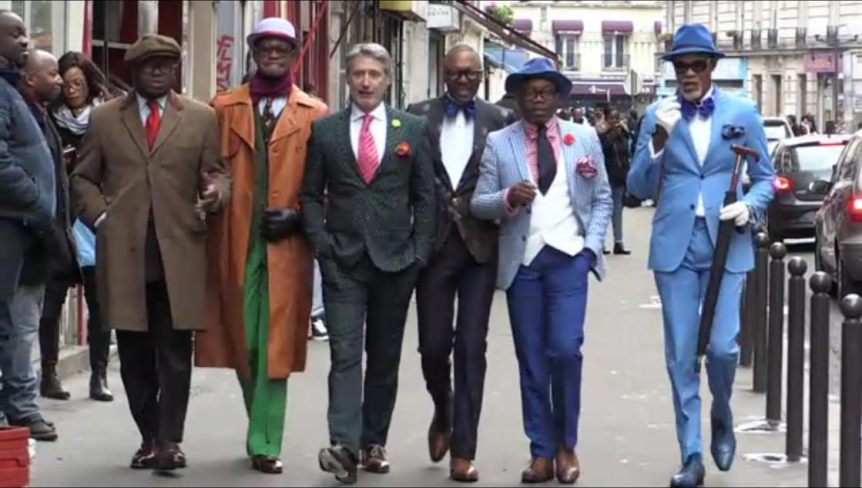
La société des ambianceurs et des personnes élégantes, ou SAPE, est une mode vestimentaire populaire née après les indépendances au Congo-Brazzaville pour ensuite se propager au Congo-Kinshasa chez les jeunes. Ce courant est dans la filiation du dandysme et ses adeptes, appelés les sapeurs s'habillent ainsi chez les grands couturiers, et pratiquent la sapologie.
......
Les dix commandements de la sapelogie
La philosophie de la sape s’accompagne de dix commandements fondamentaux, qui régissent leur comportement et résument leurs valeurs.
Premier commandement : Tu saperas sur terre avec les humains et au ciel avec ton Dieu créateur.
Deuxième commandement : Tu materas les ngayas (non connaisseurs), les nbéndés (ignorants), les tindongos (les parleurs sans but) sur terre, sous terre, en mer et dans les cieux.
Troisième commandement : Tu honoreras la sapelogie en tout lieu.
Quatrième commandement : Les voies de la sapelogie sont impénétrables à tout sapelogue ne connaissant pas la règle de trois, la trilogie des couleurs achevées et inachevées.
Cinquième commandement : Tu ne cèderas pas.
Sixième commandement : Tu adopteras une hygiène vestimentaire et corporelle très rigoureuse.
Septième commandement : Tu ne seras ni tribaliste, ni nationaliste, ni raciste, ni discriminatoire.
Huitième commandement : Tu ne seras pas violent, ni insolent.
Neuvième commandement : Tu obéiras aux préceptes de civilité des sapelogues et au respect des anciens.
Dixième commandement : De par ta prière et tes 10 commandements, toi sapelogue, tu coloniseras les peuples sapephobes.
https://fr.wikipedia.org/wiki/Soci%C3%A9t%C3%A9_des_ambianceurs_et_des_personnes_%C3%A9l%C3%A9gantes

